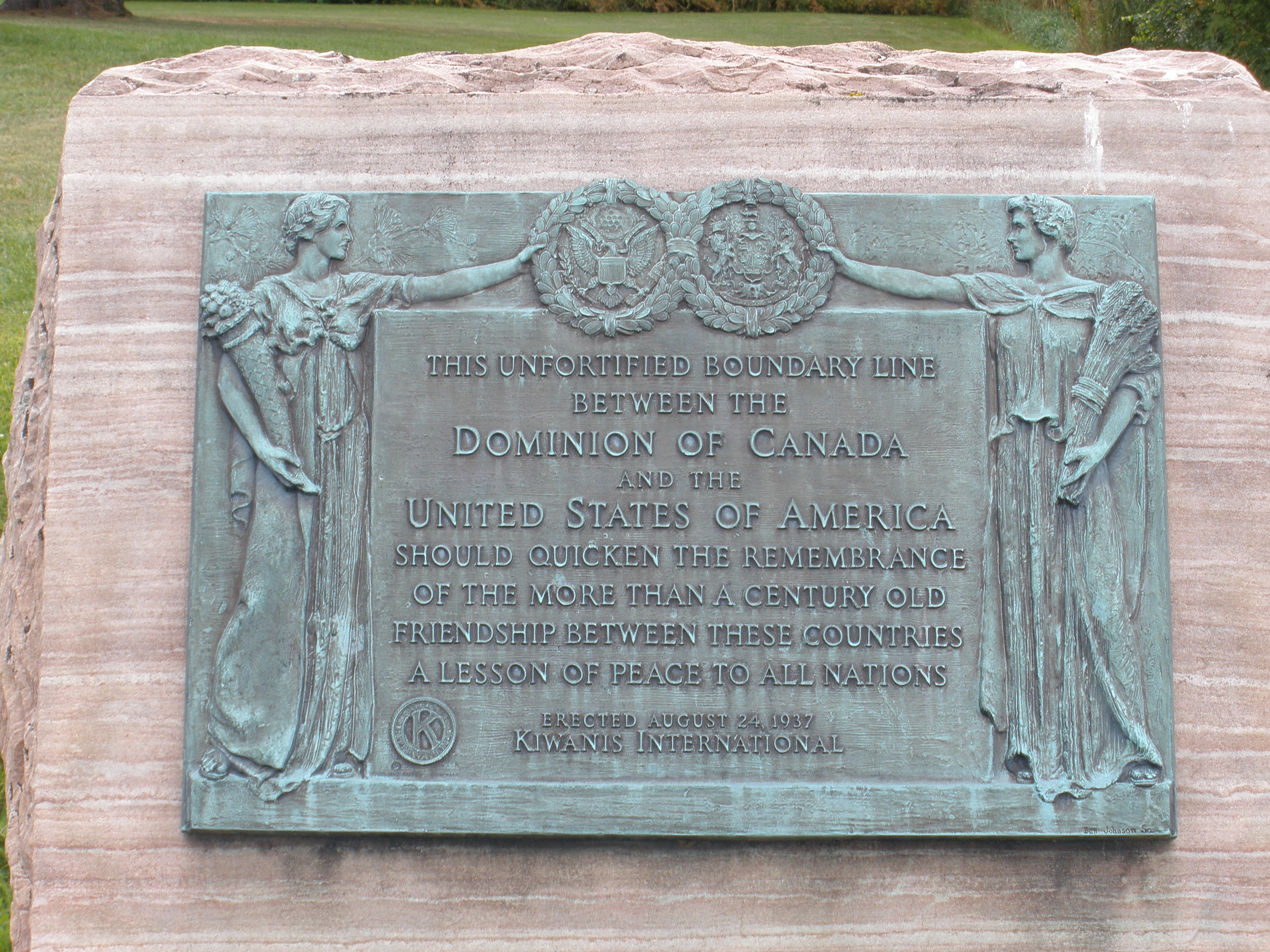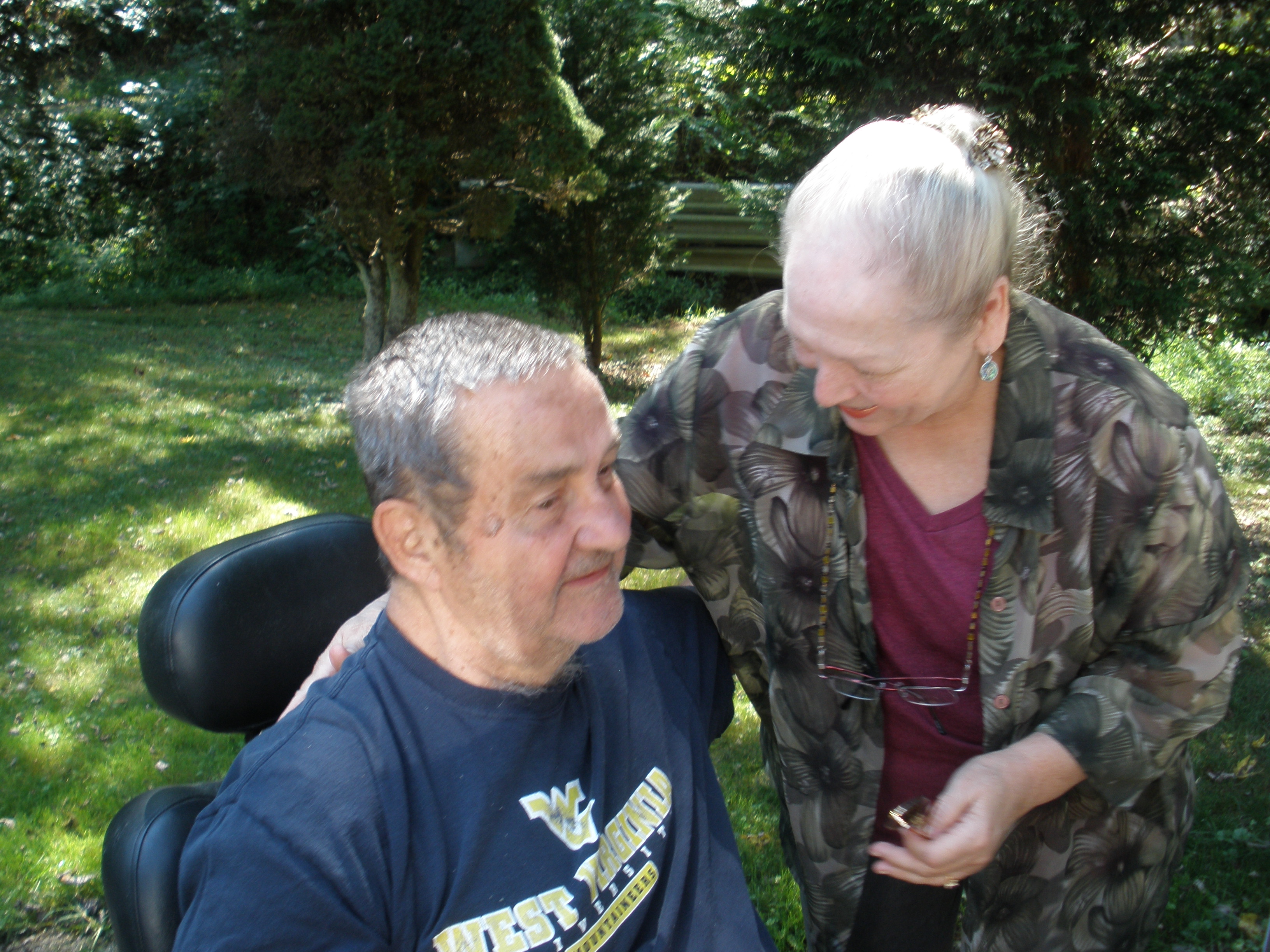Driven | | Days 1-2
|
| of Indiana (USA) Day 1 | Monday August 6 375 (604)
| Gaar Mansion in Richmond, IN [no time to visit]
| Depart home in Knoxville, TN | Buy new automotive battery in Cincinnati, OH Visit cousins Janet & Dick Davidson near Knightstown, IN Day 2 | Tuesday August 7 196 (315)
| Carnegie Library (1913) in Roachdale, IN - has original circulation desk | Carnegie [Library] Museum of Montgomery Cty (1901) in Crawfordsville Peace Statue at Montgomery County Courthouse in Crawfordsville, IN Drive around farm in Hancock County, IN | Try visit Bruce & Linda Muegge near Carthage, IN [not home] Visit family graves at cemetery in Roachdale, IN Meeting with Terry Nichols in Whitesville, IN Visit Montgomery Cty Assessor's Office. Meet with Joyce ____. Obtain names of assessor Kelly Ewoldt & deputy Sherri Bentley Obtain names of Karen __ & Jennifer __ at Cty Mapping Dept. County Mapping Department [closed until Thursday] Days 3-6
|
| of Windsor, Toronto & Kingston, Ontario (Canada) Day 3 | Wednesday August 8 300 (482)
| Seated Lincoln Monument in Wabash, IN [no time to visit] | Peace House & Peace Garden at Manchester University Kiwanis Peace Plaque on Ambassador Bridge [no chance to search] 5 "Gateway to Freedom" (2001) in Detroit, MI [no time to visit] "Tower of [African-American] Freedom" (2001) in Windsor, ON 3 Inukshuk (2000) at Windsor City Hall Square 10 Rotary International Peace Monument (2003) in Clark Square Peace Beacon (2007) at The Bistro on the River in Windsor, ON Knights of Columbus Peace Monument (1967) in Dieppe Park Charlie Brooks Memorial Peace Fountain (1992) in Detroit River Bangladesh Peace Clock (2010) in Ouellette Avenue [no time to visit] Distant view of Peace Carillion (1940) on Belle Isle in Detroit, MI Use Ohio Turnpike (I-80/I-90) from Indiana line to Toledo | Tour of Detroit led by Clay Jackson [not available] Try to use Ambassdor Bridge [approach jammed] Use Detroit River Tunnel to enter Canada See Hiram Walker distillery in Windsor, ON Day 4 | Thursday August 9 223 (359)
| John Freeman Walls Hist Site & Ugrnd RR Museum, Lakeshore [closed]
| Buy Canadian phone card [since US cell phone won't work] | See many wind turbines Visit cousin Randy Campbell on Trillium Alpaca & Goat Farm Receive gift of goat ice cream & cheese from ____ See wild turkeys on Randy's farm Visit Campbell family graves in Morpeth Cemetery Meet ___ at Talbot Antiques in Morpeth, ON Dinner at beer restaurant in Guelph, ON Day 5 | Friday August 10 189 (304)
| Vishnu Mandir & Canadian Museum of Hindu Civilization (2004) | Statue of Mahatma Gandhi Fountain from Peace Palace in The Hague (1929) [no time to visit] Angel of Peace, Shrine Peace Memorial (1930) [no time to visit] Peace Garden, Nathan Phillips Square (1984) [no time to visit] "Cairn of Peace & Golden Plough" (1955) in Cobourg, ON 9 See many Toronto expressways & power lines | Drive to Belleville waterfront Dinner at "Bull & Boar" restaurant Day 6 | Saturday August 11 199 (320)
| Marine Museum of the Great Lakes in Kingston, ON | Royal Military College of Canada in Kingston, ON Rush-Bagnot Peace Treaty marker (Date?) at Royal Military College Canadian Museum of Civilization (1856/1989) in Gatineau, QC 4 See power boat race in Kingston, ON | Use 1000 Islands Parkway from Gananoque to Brockville See 1000 Islands Bridge. Photograph Lions Club arch. Buy inukshuk figurine & earrings at Museum of Civilization Dinner at Thai & Lebanese restaurant See fireworks over park in Gatineau, QC Day 7
|
| of Ottawa, Ontario (Canada) Day 7 | Sunday August 12 155 (249)
| "Plus Jamais la Guerre" (1992) in Hull, QC | Statues of Peace & Freedom on National War Memorial (1939) in Ottawa Peace Tower (1927), Centre Block on Parliament Hill in Ottawa, ON Statue of Lester Pearson (1989) on Parliament Hill [too far to walk] "The Famous Five [Women]" (2000) on Parliament Hill in Ottawa, ON "Reconciliation"/National Peacekeeping Monument (1992) in Ottawa, ON Sri Chinmoy Peace Plaque (1992) at Ottawa City Hall [forgot to search] World Peace Bell (1996) from Japan at Ottawa City Hall 8 "Canadian Tribute to Human Rights" (1990) near Ottawa City Hall Kiwanis Peace Plaque (1936) in Cornwall, ON [not found] Inukshuk (2010) in Lamoureux Park, Cornwall, ON [not found] Peace sculptor Shaukat Chaney in Lamoureux Park [not found] See daily "Guard Mount" by Ceremonial Gurd on Parliament Hill | See veterans ceremony with UN flags at Reconciliation monument Meet Jim Sherman at Perfect Books on Elgin Street in Ottawa Moses-Sanders Power Dam Visitors Centre [closed on Sunday] Dinner in all-you-can-eat Asian restaurant (Kanda) Days 8-9
|
| of Montréal & Québec City, Québec (Canada) Day 8 | Monday August 13 132 (212)
| "Reparation Monument to the Victims of Genocide" (1998) | Place de la Grande-Paix-de-Montréal (Date?) in Old City [not found] Place de la Paix (1994) in Old City Montréal Biosphère (US pavillion in 1967 World's Fair) Cloche de la Paix (1998), Montréal Botanical Gardens [paid admission] Caesura Sculpture (1991) in Jarry Park [no time to visit] "Give Peace a Chance" (2009) in Mount Royal Park [no time to visit] Jardin Roerich (2009) in St-Viateur [no time to visit] Try to meet John MacLeod (Univ of Montréal) [not available] | See Basilique Notre-Dame de Montréal in Old City See Habitat 67 (from 1967 World's Fair) See Stadium Tower (from 1976 Olympics) Dinner at Greek restaurant near Trois Rivières, QC Watch ship in St. Lawrence Seaway pass under bridge Day 9 | Tuesday August 14 195 (314)
| Monument des Jeunes pour le Paix & Desarmement [no time to visit] | Parc de la Paix de St.-Laurent (1992) [no time to visit] Parc de la Paix (1994) in Charlesbourg, QC [highway exit closed] Donate two 1935 travel scrapbooks to QC Office du tourisme | Meet Francine Beaupré, Chef d'équipe, QC Office du tourisme Visit Old City of Québec. See Chateau de Frontenac (1893). See Wolfe-Montcalm Monument (1827) in Parc des Gouverneurs See Montmorency Falls Buy Iroquois Baton de la Paix fm Scott Kingsland at Atelier Paré See Basilica of Sainte-Anne-de-Beaupré Days 10-12
|
| of Québec North Shore (Canada) Day 10 | Wednesday August 15 332 (534)
|
| Saguenay–St. Lawrence Marine Park | See 5 Zodiacs depart from Essipit Reserve to watch whales Cap-du-Bon-Désir whale watching site [cost admission] See numerous sand dunes from Forestville to Moise Attempt have lunch at Manor Hotel [dining room closed] [Learn ferry reservation possible only on Friday night] Day 11 | Thursday August 16 63 (101)
|
| Drive around Maliotenam [Innu Aboriginal] Reserve 11 | Tour of Rio Tinto IOC iron ore operation [ended for 2012] Tour of Aluminerie Alouette smelter [conflict with IOC tour] Lunch at seafood restaurant in Sept-Îles, QC Vieux Quai & board walk. See cormorants & terns. Vieux-Poste (Old Trading Post) in Uashat [under renovation] Agara [Innu Art Place] in Uashat, QC. Meet Melina Vassiliou. Not | Visited 466 (750)
|
| [Ferry reservation prevents driving East as intended.] | Mingan Archipeligo Marine Park Reserve End of highway 138 (no bridge over Rivière Natashquan). Day 12 | Friday August 17 191 (307)
| North Shore Regional Museum in Sept-Îles, QC
| Meet conserver & resercher Steve Dubreuil | Meet Luc-Maxime Charbonneau-Lefebre (Univ. of Montréal). Dubreuil suggests "Cain's Legacy" by Richard Geren (1990) Sail 2.5-hrs on MV Camille-Marcoux across St. Lawrence at night Days 13-15
|
| of Gaspé Peninsula, Québec (Canada)  Drummondsville DrummondsvilleDay 13 | Saturday August 18 194 (312)
| Exploramer museum in Ste.-Anne-des-Monts, QC
| Lunch at Poissonerie Restaurant du Quai in Ste.-Anne-des-Monts | Photograph quartz veins in stratified cliffs Photograph war memorial in front of a church in Cloridorme, QC Barely miss hitting black bear running across the road Day 14 | Sunday August 19 329 (529)
|
| See Percé Rock from both sides | Observe Triassic-like redbed sediments south of Percé, QC Dinner in Campbellton (during concert by Jehovah's Witnesses) Day 15 | Monday August 20 287 (462)
| Grosse Ile & Irish Memorial National Hist. Site (1974) [no time to visit] | Parc de la Paix at old Canadian AF Base in Lévis, QC [no time to visit] Visit Noël au Château & store in Rivière-du-Loup, QC | Buy cheeses at Fromagerie Lemaire in St-Cyrille-de-Wendover Buy poulet roti in Loblaw's grocery store. Spend all Canadian cash. Days 16-19
|
| of New York, etc. (USA) 
 Batavia Batavia
 Knoxville Knoxville
Day 16 | Tuesday August 21 241 (388)
| Parc de la Paix [by John MacLeod] in Drummondsville, QC | Centre d'Interprétation de la Guerre de 1812 in Lacolle, QC 6 Kiwanis Peace Plaque (1937) in Lacolle, QC [not found] Kiwanis Peace Plaque (1937) in Trout River, NY [found by EWL!] Visit Blockhaus de la Rivière-Lacolle (c1781) | Obtain name of local historian Gilles Pèlerin Stop at 3 apple orchards/cider producers [all 3 closed] See large fox loping alone on St Lawrence Seaway lawn Visit Eisenhower Lock (1959) on Seaway near Massena, NY See Amish vendors along road & in shopping center parking lot Dinner in Chinese restaurant Day 17 | Wednesday August 22 300 (483)
| Kiwanis Peace Plaque in Alexandria Bay, NY [found by DeYoung!] | Honorary International Peace Garden in Batavia, NY (2012) 7 Holland Land Office Museum in Batavia, NY Meet Gary DeYoung, director 1000 Islands Intl Tourism Council | Obtain "The War of 1812 Bicentennial Peace Garden Trail" Use New York Thruway (I-90) from Syracuse to Buffalo Obtain name of peace garden chair Barbara A. Toal in Batavia Meet Jeff Donahue, director Holland Land Office Museum Buy 1812-2012 peace brick at Holland Land Office Museum Intl Peace Garden Found pres Paula Savage [neglect to contact] Day 18 | Thursday August 23 302 (485)
|
| Use New York Thruway (I-90) from Hamburg to PA line | Buy wine at Courtyard Wineries in North East, PA Visit Presque Isle State Park in Erie, PA (in Lake Erie) Buy Lion & Lamb coaster at Wendell August Forge, Grove City Buy olive CND peace pins fm West Bank at Slovak Folk Crafts Visit shopping center on mountain tops in Morgantown, WV Day 19 | Friday August 24 555 (893)
|
| Visit cousins Bruce & Annette Carter in Big Chimney, WV | Use West Virginia Turnpike (I-64/I-77) Arrive home in Knoxville, TN Totals | 19 days 4,757 mi | (7,656 km) 9 states | 3 provinces (NB,ON,QC) 30 monuments, 8 museums, 108 photographs | 4 peace souvenirs (inukshuk, lion & lamb, peace stick & peace brick) 5 cousins, 16 new contacts, 5 wildlife encounters (bear, cormorants, | fox, terns & wild turkeys - but no deer, moose or whale) |
Endnotes (as emailed on September 5, 2012)